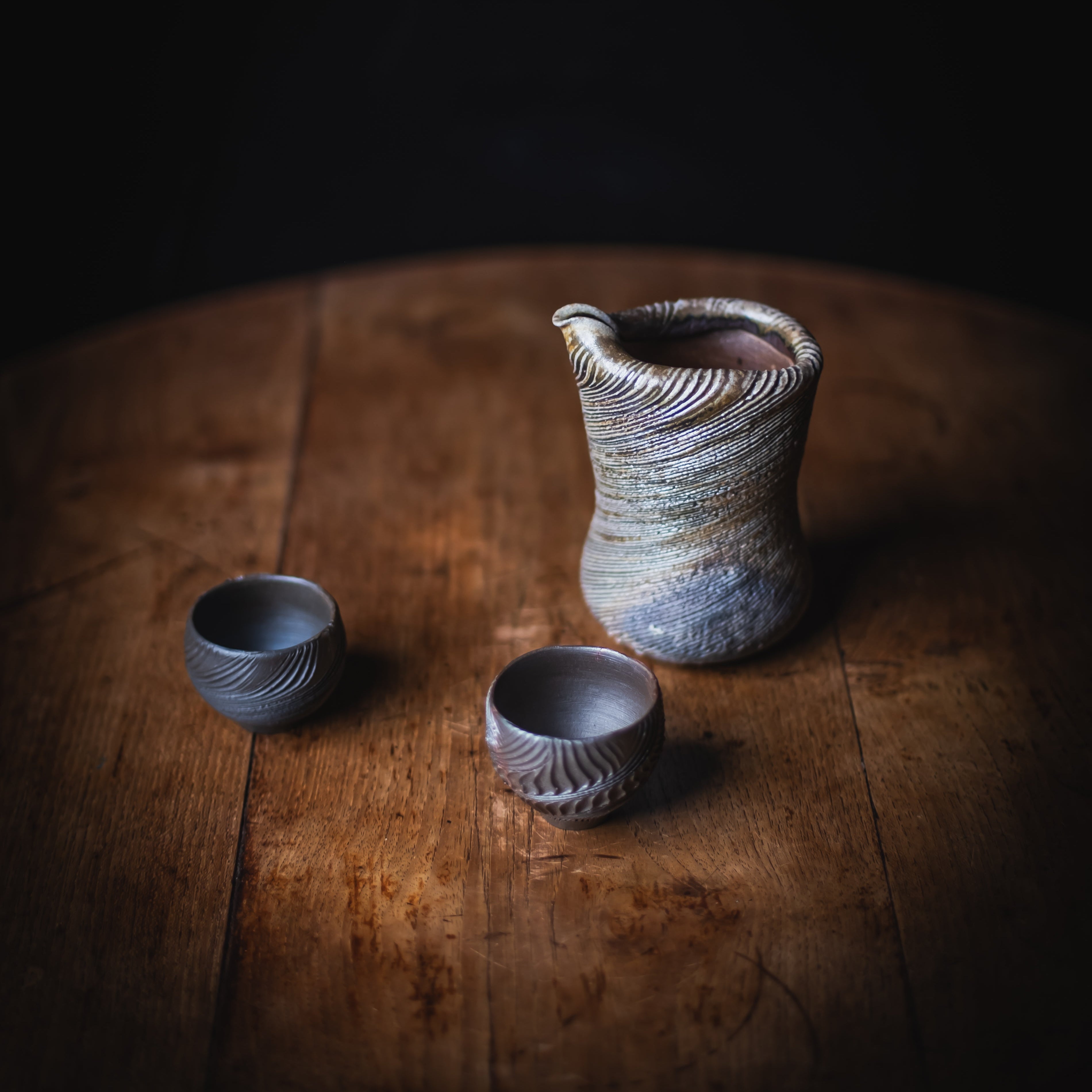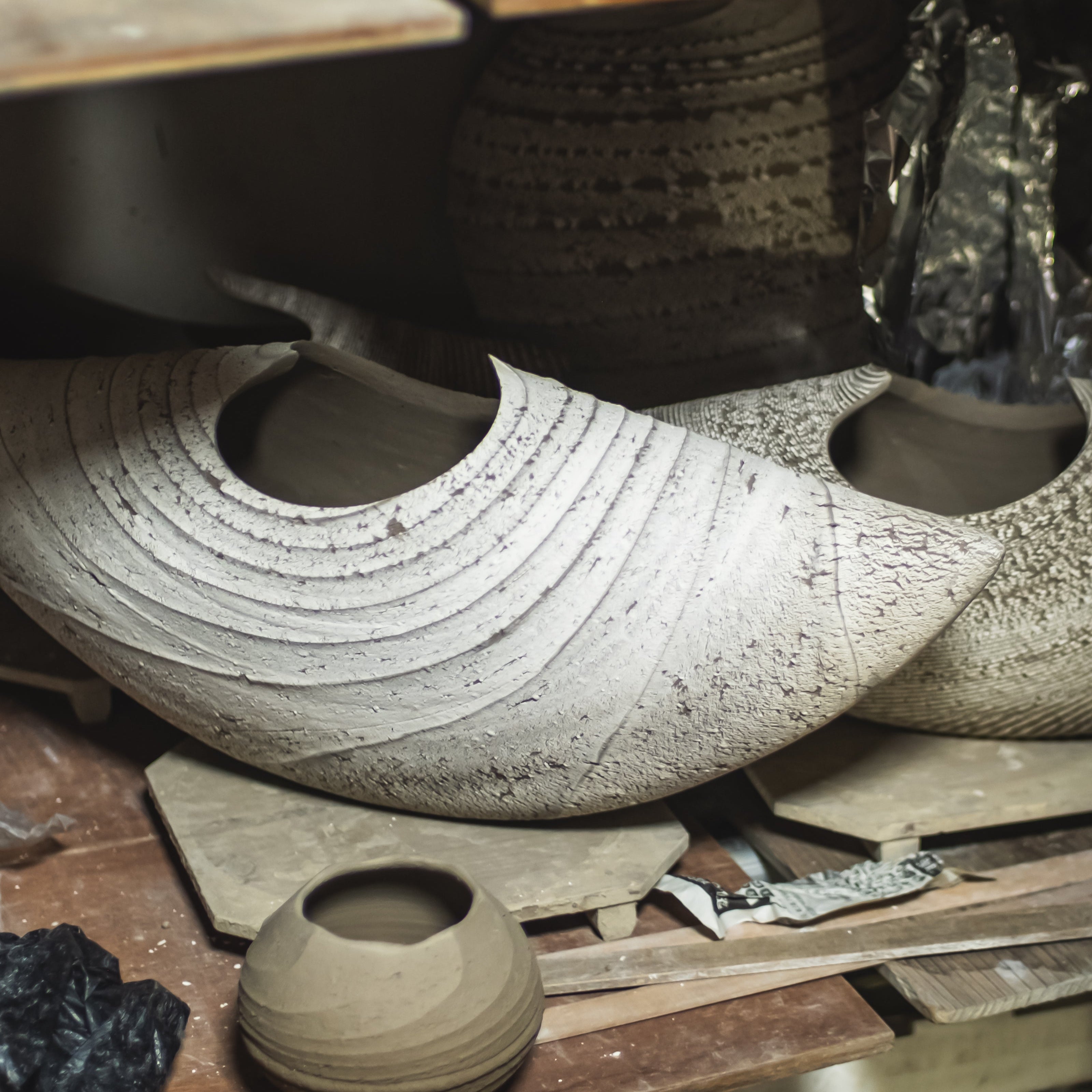



Ishida-san draws inspiration from nature, reflecting marine and geological forms in his "Rahou" (螺法) spiral style. He utilizes local Bizen clay and unglazed wood-firing techniques to achieve natural ash effects, imparting unique textures and colors to his pieces.

"I have created techniques by learning about chance, the golden ratio, and by using the laws of the natural world.” (From and interview with Imprint Space)
"The old masters came to appreciate the beauty of the natural colors that the naked clay develops when exposed to heat, fire and melted ash in different parts of the kiln. This appreciation for natural, unglazed clay is called tsuchi-aji, i.e. the ‘flavor of the earth’." (From an interview with Insula Europea)

Known for functional ceramics such as vases, tea, and sake vessels, Kazuya's works are celebrated in both Japanese and international galleries.
Techniques:
By integrating these techniques, Ishida-san blends traditional Bizen pottery methods with contemporary influences, resulting in pieces that are both rooted in history and reflective of modern aesthetics.
Our gallery, studio, and tea space are a hub for experiencing and sharing the art of ceramics and tea.
Similar to the concept of “Utsuwa-galleries” in Japan, we are holding monthly exhibitions of unique ceramicists from Japan, China and Europe.
We also regularly hosting Workshops and Tea Experiences.